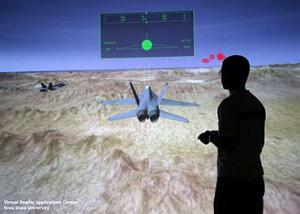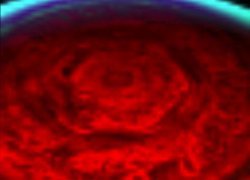Andrew Shields
PhysicsWebWed, 28 Mar 2007 08:44 UTC
Technology that exploits the strange rules of quantum mechanics to guarantee the security of encrypted messages is the first product of a new quantum-information industry to reach the market, as Andrew Shields and Zhiliang Yuan explain
As theories go, quantum mechanics has certainly been successful. Despite its many counterintuitive predictions, it has provided an accurate description of the atomic world for more than 80 years. It has also been an essential tool for designing today's computer chips and hard-disk drives, as well as the lasers used in the fibre-optic communications of the Internet. Now, however, the ability to manipulate the quantum states of individual subatomic particles is allowing us to exploit the strange properties of quantum theory much more directly in information technology.
Robert P Crease
PhysicsWebWed, 28 Mar 2007 08:39 UTC
Why is it that particular equations, formulas and expressions become icons, asks Robert P Crease.
When the 14-year-old Richard Feynman first encountered eiπ + 1 = 0, the future physics Nobel laureate wrote in big, bold letters in his diary that it was "the most remarkable formula in math". Stanford University mathematics professor Keith Devlin claims that "like a Shakespearean sonnet that captures the very essence of love, or a painting that brings out the beauty of the human form that is far more than just skin deep, Euler's equation reaches down into the very depths of existence". Meanwhile Paul Nahin - a retired US electrical engineer - says in his recent book, Dr Euler's Fabulous Formula, that the expression sets "the gold standard for mathematical beauty".
For some people this expression, named after the 18th-century Swiss mathematician Leonhard Euler, even seems to have become an icon, having special significance apart from its mathematical context. It once even served as a piece of evidence in a criminal trial. In August 2003 an eco-terrorist assault on several car dealerships in the Los Angeles area resulted in millions of dollars worth of damage when a building was set alight and over 100 vehicles were destroyed or defaced. The vandalism included graffiti on the cars that read "gas guzzler" and "killer" - and, on one Mitsubishi Montero, eiπ + 1 = 0. Using this as a clue and later as evidence, the FBI arrested William Cottrell, a graduate student in theoretical physics at the California Institute of Technology, who was later tried and convicted. Cottrell testified at his trial that "Everyone should know Euler's theorem".
A space rock the size of three football fields may have slammed into California more than 35 million years ago, according to a team of scientists that includes a high school student.
The proposed impact may have created the giant 3.4-mile-wide (5.5-kilometer-wide) craterlike formation that the team found buried 4,900 to 5,250 feet (1,490 to 1,600 meters) below sea level west of Stockton, California
Rocks in the potential crater date to about 37 to 49 million years ago.
The formation resembles an impact crater, the researchers said, but they are continuing to analyze rocks from oil exploration wells dug in the region for telltale signs of a collision.
Jared Morrow, an assistant professor of geology at San Diego State University, presented preliminary details of the discovery earlier this month at the Lunar and Planetary Science Conference in Houston, Texas.
China and the US are the countries most vulnerable to damage from future asteroid impacts, according to preliminary new research. Sweden also ranks surprisingly high in this first attempt at quantifying the risks of impact effects, such as tsunamis, on individual nations.
You're high above the desert peaks. Your aircraft are approaching their targets. Information from instruments, cameras and radar is before your eyes. And with the help of 100 million pixels of bright and vivid virtual reality you're in control of a swarm of U.S. Air Force unmanned aerial vehicles.

|
| ©Kevin Teske
|
| Muthukkumar Kadavasal, an Iowa State doctoral student in human computer interaction, demonstrates how improvements to Iowa State's C6 provide virtual reality at the world's highest resolution.
|
Pasadena, Calif. -- An odd, six-sided, honeycomb-shaped feature circling the entire north pole of Saturn has captured the interest of scientists with NASA's Cassini mission.

|
| ©NASA
|
NASA's Voyager 1 and 2 spacecraft imaged the feature over two decades ago. The fact that it has appeared in Cassini images indicates that it is a long-lived feature. A second hexagon, significantly darker than the brighter historical feature, is also visible in the Cassini pictures. The spacecraft's visual and infrared mapping spectrometer is the first instrument to capture the entire hexagon feature in one image.
Comet Lovejoy, discovered just last week by Terry Lovejoy of Thornlands, Australia, is on its way into the solar system. The existence of this lovely green comet was confirmed by John Drummond of Gisborne, New Zealand.
A little under one-third of U.S. households have no Internet access and do not plan to get it, with most of the holdouts seeing little use for it in their lives, according to a survey released on Friday.
Christine McGourty
BBCMon, 26 Mar 2007 22:54 UTC
Scientists believe they have found a new way to track the rise and fall of some ancient civilisations - by studying fossilised mites that thrive in the dung of their livestock.
A team from America, France and Britain have been studying mites from the soil in the Andes in Peru and say the tiny creatures can provide clues to changing patterns of trade and of disease epidemics through history.
Philip Ball
ScienceMon, 26 Mar 2007 11:14 UTC
The wonderful acoustics for which the ancient Greek theatre of Epidaurus is renowned may come from exploiting complex acoustic physics, new research shows.
The theatre, discovered under a layer of earth on the Peloponnese peninsula in 1881 and excavated, has the classic semicircular shape of a Greek amphitheatre, with 34 rows of stone seats (to which the Romans added a further 21).
Its acoustics are extraordinary: a performer standing on the open-air stage can be heard in the back rows almost 60 metres away. Architects and archaeologists have long speculated about what makes the sound transmit so well.
